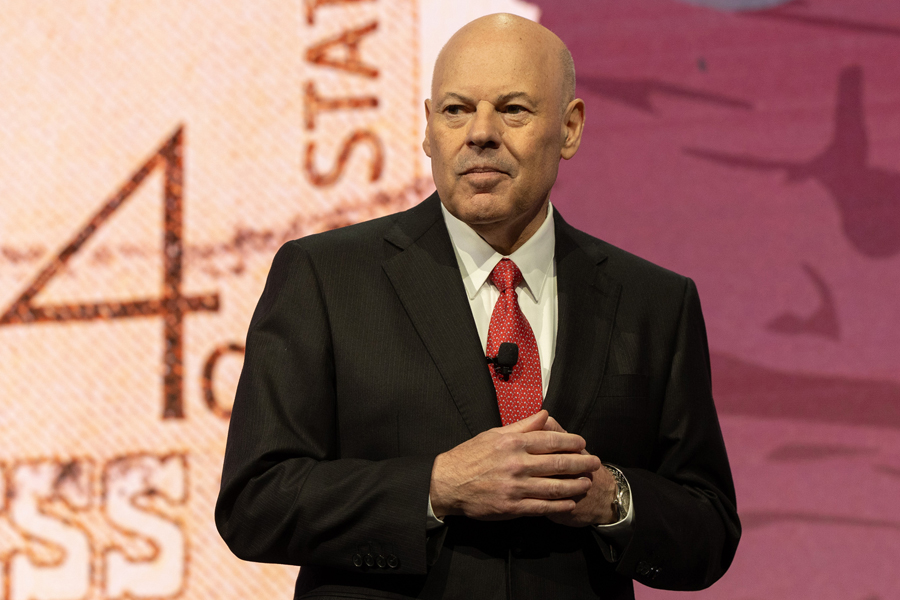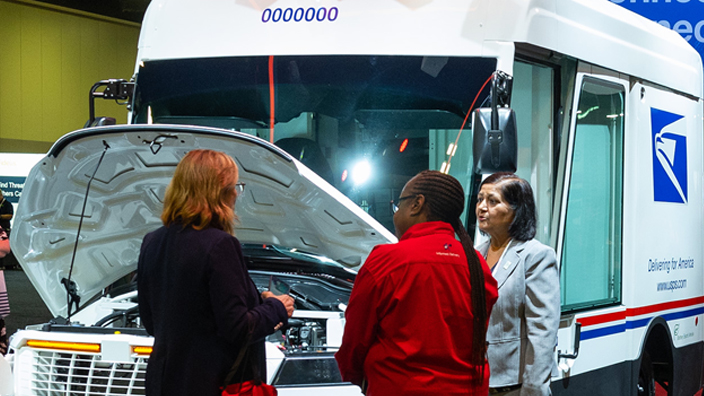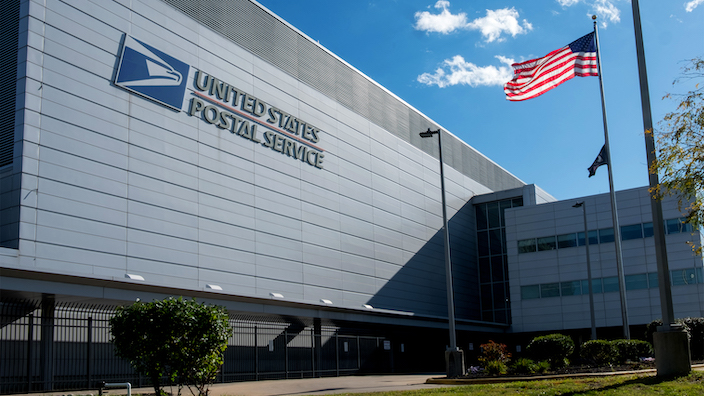In his keynote address on June 3, Postmaster General Louis DeJoy spoke to more than 4,000 attendees at the National Postal Forum in Indianapolis.
He described the major elements of the Delivering for America plan, the factors making the transformation of USPS necessary, and the scale and breadth of the modernization now positioning the organization — and its employees and customers — for a successful future.
The significant accomplishments and areas of progress include:
• Modernizing the postal delivery and processing network. The organization’s commitment of nearly $15.3 billion from the plan’s $40 billion self-funded investment budget is driving the creation of the modernized postal network currently underway.
• Upgrading the postal delivery fleet. The fleet is being enhanced with 106,000 new, more reliable vehicles, including 66,000 zero-emission electric vehicles.
• Boosting overall shipping volume. The successful implementation of USPS Ground Advantage and USPS Connect has led to impressive increases in shipping volumes.
• Delivering significant savings. Delivering for America has dramatically reduced the organization’s projected 10-year losses from $160 billion to $65 billion.
“When I arrived, the trajectory was in plain sight. We were 15 years into a 25-year plan to lose close to $300 billion. And that is what today, we are working very hard to change. We have a plan, it’s called the Delivering for America plan, and we are making great progress on the strategies it identifies,” said DeJoy.
Addressing the historical difficulties encountered by the Postal Service, DeJoy traced these issues back to decisions made by the organization’s legislative and regulatory authorities prior to his tenure.
“In 2006, Congress and the Postal Regulatory Commission legislated, and began regulating, a business model that was dead on arrival. This was immediately proven,” he said. “Their new requirements flew in the face of the financial, service and operating model created in 1971 when the self-sustaining independent agency was created. The 2006 legislation was a shocking blow to the Postal Service. The subsequent 15 years of actions and inactions by Congress and our regulator substantially destroyed it. As we proceed with our transformation, we must do so by overcoming the damage inflicted — to infrastructure, to people, to mission, to culture — and we must correct for the bad practices we developed, as an organization under duress, and without a plan.”
DeJoy, while addressing the urgent need for change in the Postal Service, outlined the comprehensive strategy being implemented under the Delivering for America initiative.
“We are now designing and implementing a new integrated mail and package network that will be logical, fully utilized, cost effective and reliable. We will also design our products and revenue streams so that they will support, and be supported by, this integrated network, and the efficient operating practice we deploy,” he said. “We will improve our productivity dramatically, and significantly reduce our transportation cost while providing reliable service. We will enable our employees to perform their duties in habitable workplaces — with the right tools and equipment, under proper instruction and supervision and with achievable daily expectations to deliver quality work at a respectable cost.”
DeJoy concluded by lauding the diligent efforts of postal employees: “The Delivering for America plan is about inspiring a change to the culture of the Postal Service team. Through our work together, this is happening. The men and women of the United States Postal Service are engaged in transforming the organization into a vibrant one, which is necessary for the long-term service the nation requires.”
The National Postal Forum — taking place June 2-6 in Indianapolis — is a four-day conference that hosts thousands of professionals from the mailing and shipping industry. Working directly with USPS, the forum enables attendees to hear from postal executives, attend classes and network.



